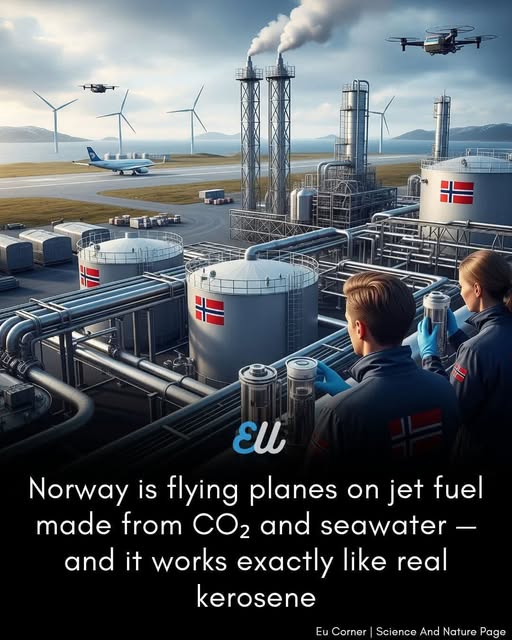
A Norwegian startup is making jet fuel from captured CO₂ and ocean water — and planes are already flying on it.
On a remote airfield in Norway’s Lofoten Islands, planes are flying on something truly unheard of: synthetic jet fuel made from nothing but carbon dioxide, seawater, and renewable electricity. This climate-neutral fuel, called e-kerosene, is chemically identical to fossil jet fuel — but created from thin air and ocean mist.
The process begins by capturing CO₂ from the atmosphere using direct air capture towers powered by wind turbines. At the same time, desalinated seawater is split using electrolysis to generate hydrogen. Through Fischer-Tropsch synthesis, the CO₂ and hydrogen are converted into hydrocarbons — forming liquid jet fuel with zero net emissions.
The system, developed by a Norwegian startup called CarbonWings, operates entirely off-grid, using only local renewable energy. Unlike biofuels, it doesn’t rely on crops or land — and unlike hydrogen planes, it doesn’t require new aircraft designs. This is plug-and-play aviation, reimagined for a decarbonized world.
Test flights have already begun with commercial aircraft running a 50% blend of the fuel — and performance metrics are nearly identical to fossil-based aviation fuel. Emissions are down by over 80%, and the fuel has passed all ICAO safety standards.
Scaling up is the next challenge. The company plans to deploy coastal micro-refineries near major airports by 2027, turning stranded wind and sea access into clean jet fuel hubs. With support from the Norwegian government and EU carbon credits, full production is expected to begin within three years.
If this works, long-haul flights may no longer be climate villains — but part of the solution. And all thanks to CO₂, water, and wind.
